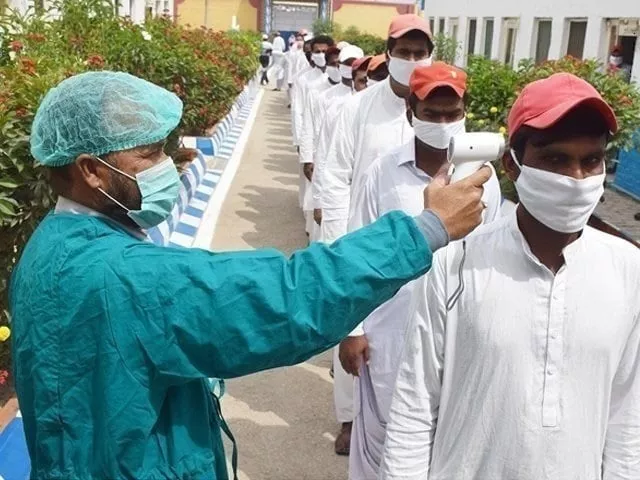66% of Covid-19 relief package remains unutilised
UK-funded report says limited data availability hampers impact assessment
ISLAMABAD:A UK-funded report reveals poor utilisation of the Prime Minister’s Relief-cum-Economic Support Package to absorb Covid-related shock, with spending of just Rs297 billion or 34%.
Prime Minister Imran Khan had announced a rescue and stimulus package worth about Rs1.2 trillion in March last year aimed at supporting the economy in absorbing the adverse impacts of the pandemic.
The UK-Aid report also notes that due to limited data availability its economic and social impacts cannot be fully assessed.
There were 12 initiatives under the relief package and the lowest spending was against the relief package announced for daily wage workers and subsidies given through the Utility Stores Corporation, according to the policy brief, ‘The Economic Impact of the Government’s Relief Package’. The UK-Aid funded the policy brief.
It assessed the performance of the government’s fiscal stimulus package as a crisis response to provide the economy and people immediate breathing space.
The report underlined that there was limited data available on the status of various components of the package, which constrained the ability of parliament and other entities, such as the media and civil society, to conduct effective oversight and assess the impact of these initiatives.
The report divided the PM’s package into two components. The Rs365 billion non-cash initiatives on account of procurement of wheat (Rs280 billion), relief in fuel prices (Rs70 billion), and support for the health and food supply (Rs15 billion).
“The government had allocated Rs875 billion in cash expenditures, i.e., areas with an impact on the fiscal balance from which Rs330 billion has been utilised or is in the process [of being utilised],” which was equal to 38% of the cash package, according to the report.But actual spending so far remained at only Rs297 billion or 34%, showed the report.
Prime Minister had allocated Rs200 billion for daily-wagers but the actual disbursements remained at just Rs17 billion or 8.5% of the allocated amount, showed the report.
Similarly, the government had allocated Rs50 billion for providing subsidised goods at the state-owned utility stories and the actual spending was just Rs10 billion.The government also ordered an audit of the subsidies given through the USC, according to an official of the Ministry of Industries.
The report showed that against Rs150 billion budget for BISP, the spending remained at Rs145 billion. The BISP budget had been announced in June 2019, which the government accounted as part of the Covid-19 relief package.
Similarly, Rs100 billion meant for giving refunds to exporters was fully disbursed. But the amount cannot be treated as relief package, since it was the taxpayers’ money that the government was unduly withholding.
The prime minister also announced Rs100 billion for the agriculture sector and small and medium enterprises and Rs39 billion remain unspent so far, according to the report.
The report showed that the government fully utilised Rs280 billion against wheat procurement of 8.2 million metric tons. However, the actual procurements were only 6.2 million tons.The report also showed Rs70 billion relief in fuel prices but again that was not given from the budget and the prices had fallen in the international market.
The government had also allocated Rs100 billion to provide temporary relief in electricity bills but the report showed disbursements remained at only Rs23 billion. It said another Rs33 billion disbursements were in process.
An estimated Rs545 billion “thus remains for further disbursement -- a massive amount which can be leveraged to offset the economic impact of the pandemic’s second wave in Pakistan, if spent efficiently and transparently”, according to the UK-Aid funded report.
It underlined to conduct analysis on spending to date in each of the areas to assess impact, identify gaps, and make improvements.
The policy brief also commented on Pakistan’s fiscal position and its growing indebtedness. It stated that foreign loans have continued to surge to unprecedented levels. The fiscal deficit has demonstrated an upward trend from fiscal years 2020 till 2022.
The multilateral and bilateral lenders have also committed funds to help Pakistan pass through the difficult phase. They had committed $3.8 billion in loans and grants to address health and socio-economic challenges.About $2.6 billion were committed and fully disbursed as the budgetary support. The lenders had also announced $1 billion in project financing but actual disbursements remained at $383 million.
The G-20 countries provided a temporary relief of $2 billion through debt service suspension but actual relief availed so far remained around $1.2 billion.


COMMENTS
Comments are moderated and generally will be posted if they are on-topic and not abusive.
For more information, please see our Comments FAQ